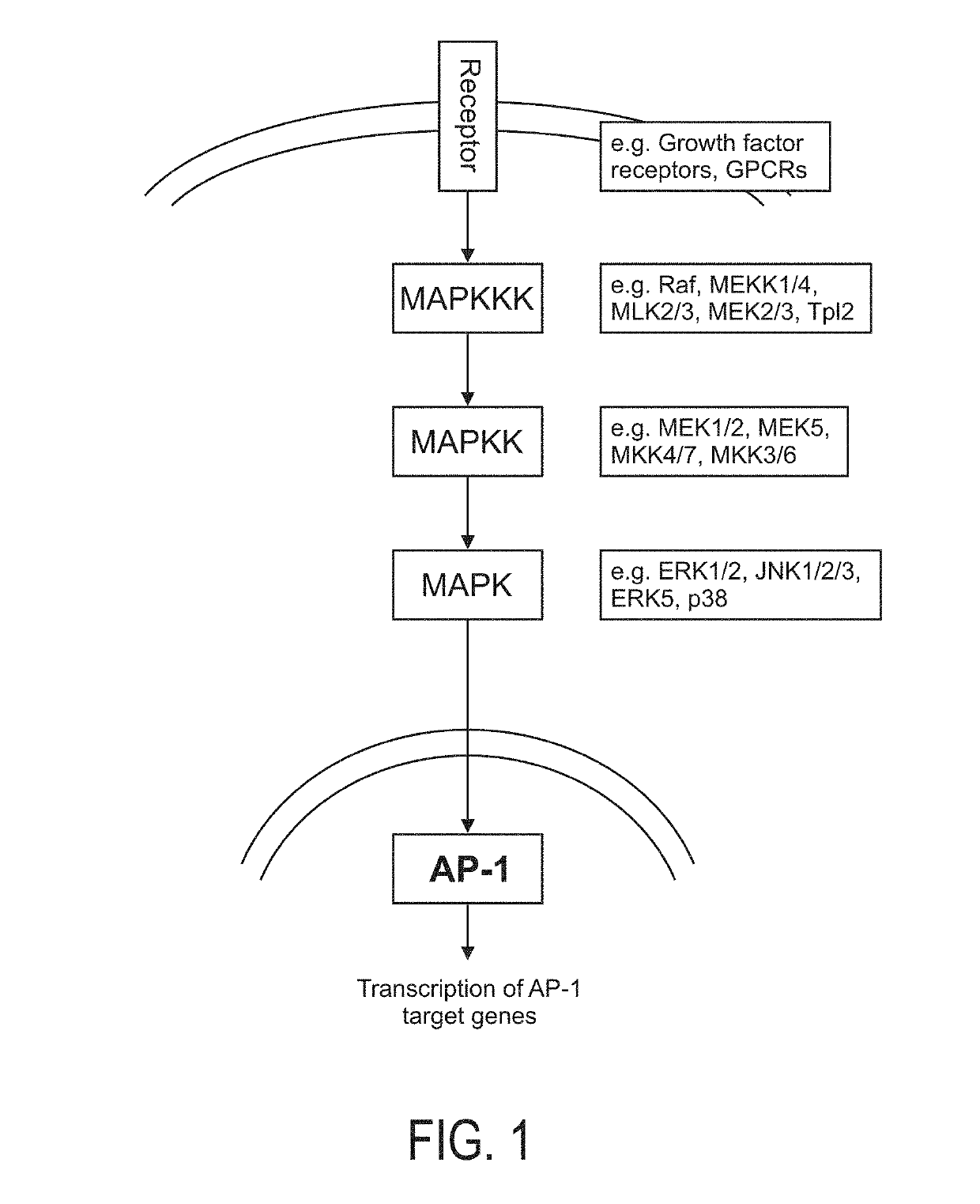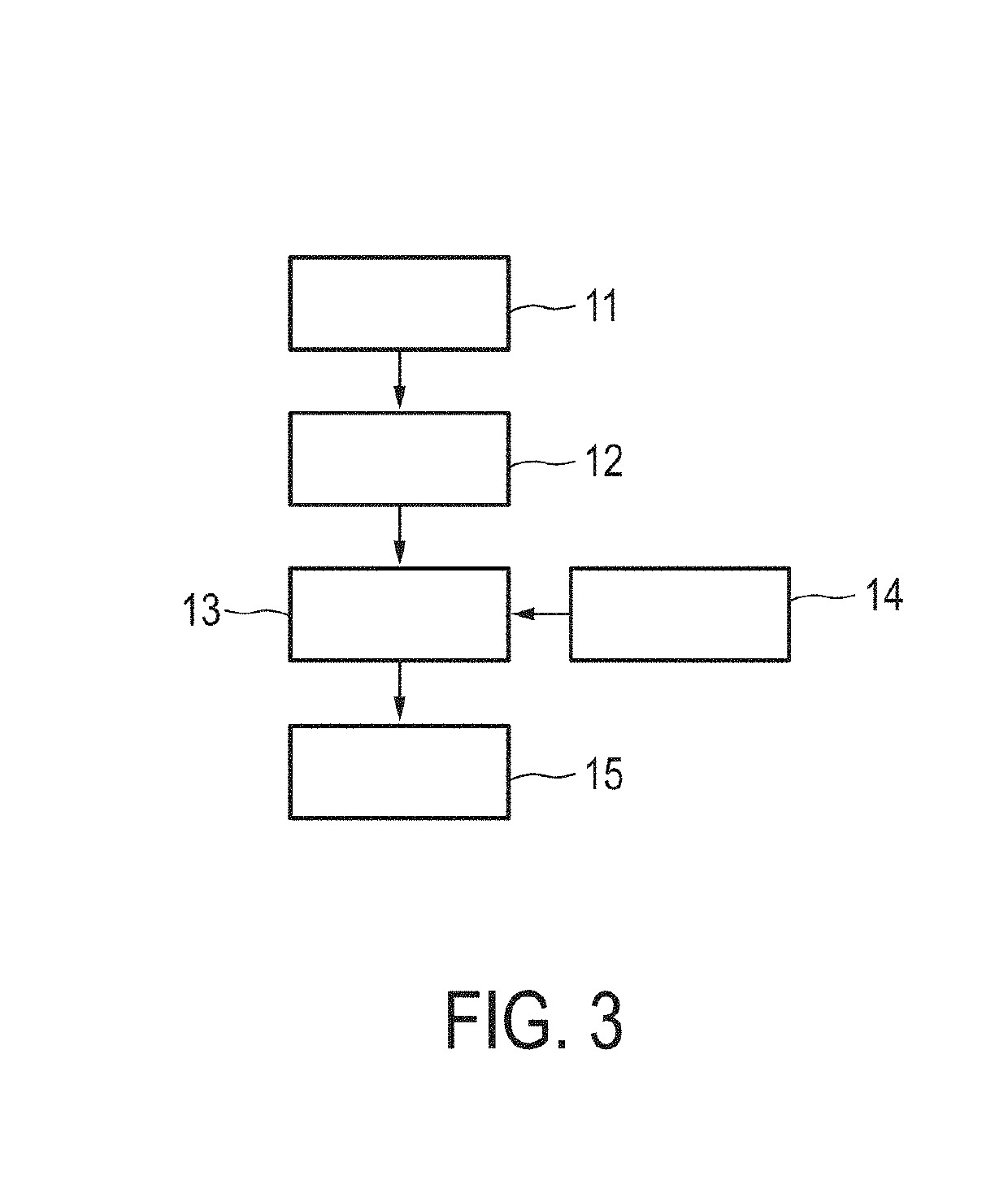Determination of mapk-ap-1 pathway activity using unique combination of target genes
a mapk-ap-1 and target gene technology, applied in the field of system biology, bioinformatics, genomic mathematical processing and proteomic mathematical processing, can solve the problems of not having a clinical assay available to assess the functional state, and difficulty in identifying and separating abnormal cellular signaling from normal cellular pathway activity
- Summary
- Abstract
- Description
- Claims
- Application Information
AI Technical Summary
Benefits of technology
Problems solved by technology
Method used
Image
Examples
example 1
cal Model Construction
[0175]As described in detail in the published international patent application WO 2013 / 011479 A2 (“Assessment of cellular signaling pathway activity using probabilistic modeling of target gene expression”), by constructing a probabilistic model, e.g., a Bayesian network model, and incorporating conditional probabilistic relationships between expression levels of at least three, for example, at least four, at least five, at least six, at least seven, at least nine, at least ten or more target genes of a cellular signaling pathway, herein, the MAPK-AP-1 cellular signaling pathway, and the level of a transcription factor (TF) element, herein, the AP-1 TF element, the TF element controlling transcription of the at least three target genes of the cellular signaling pathway, such a model may be used to determine the activity of the cellular signaling pathway with a high degree of accuracy. Moreover, the probabilistic model can be readily updated to incorporate additi...
example 2
of Target Genes
[0192]A transcription factor (TF) is a protein complex (i.e., a combination of proteins bound together in a specific structure) or a protein that is able to regulate transcription from target genes by binding to specific DNA sequences, thereby controlling the transcription of genetic information from DNA to mRNA. The mRNA directly produced due to this action of the TF complex is herein referred to as a “direct target gene” (of the transcription factor). Cellular signaling pathway activation may also result in more secondary gene transcription, referred to as “indirect target genes”. In the following, (pseudo-)linear models or Bayesian network models (as exemplary mathematical models) comprising or consisting of direct target genes as direct links between cellular signaling pathway activity and mRNA level, are exemplified, however the distinction between direct and indirect target genes is not always evident. Herein, a method to select direct target genes using a scori...
example 3
and Using the Mathematical Model
[0210]Before the mathematical model can be used to infer the activity of the cellular signaling pathway, herein, the MAPK-AP-1 cellular signaling pathway, in a subject, the model must be appropriately trained.
[0211]If the mathematical model is a probabilistic model, e.g., a Bayesian network model, based at least in part on conditional probabilities relating the AP-1 TF element and expression levels of the at least three target genes of the MAPK-AP-1 cellular signaling pathway measured in a sample, the training may preferably be performed as described in detail in the published international patent application WO 2013 / 011479 A2 (“Assessment of cellular signaling pathway activity using probabilistic modeling of target gene expression”).
[0212]If the mathematical model is based at least in part on one or more linear combination(s) of expression levels of the at least three target genes of the MAPK-AP-1 cellular signaling pathway measured in the sample, th...
PUM
| Property | Measurement | Unit |
|---|---|---|
| Volume | aaaaa | aaaaa |
| Level | aaaaa | aaaaa |
Abstract
Description
Claims
Application Information
 Login to View More
Login to View More - R&D
- Intellectual Property
- Life Sciences
- Materials
- Tech Scout
- Unparalleled Data Quality
- Higher Quality Content
- 60% Fewer Hallucinations
Browse by: Latest US Patents, China's latest patents, Technical Efficacy Thesaurus, Application Domain, Technology Topic, Popular Technical Reports.
© 2025 PatSnap. All rights reserved.Legal|Privacy policy|Modern Slavery Act Transparency Statement|Sitemap|About US| Contact US: help@patsnap.com



